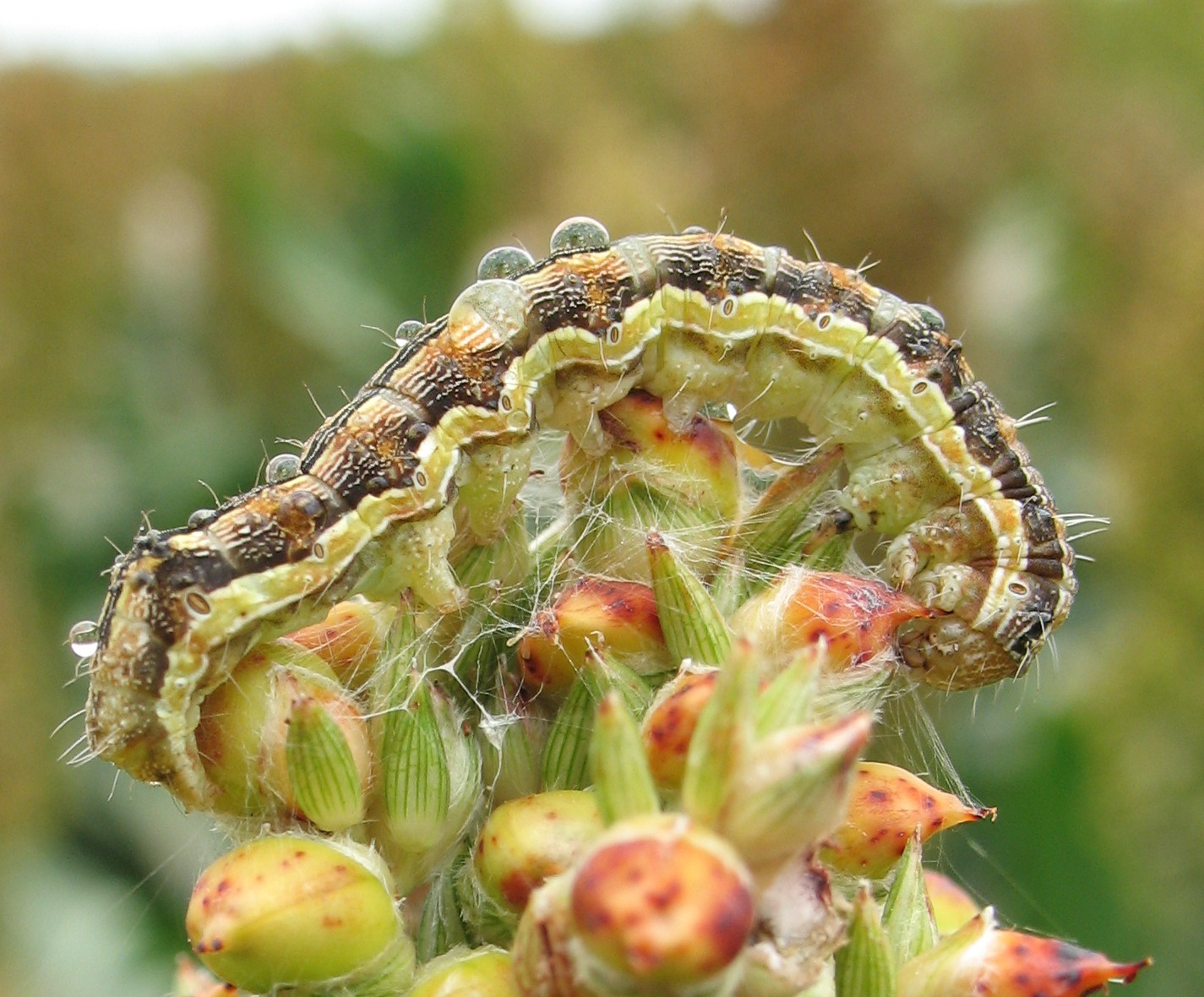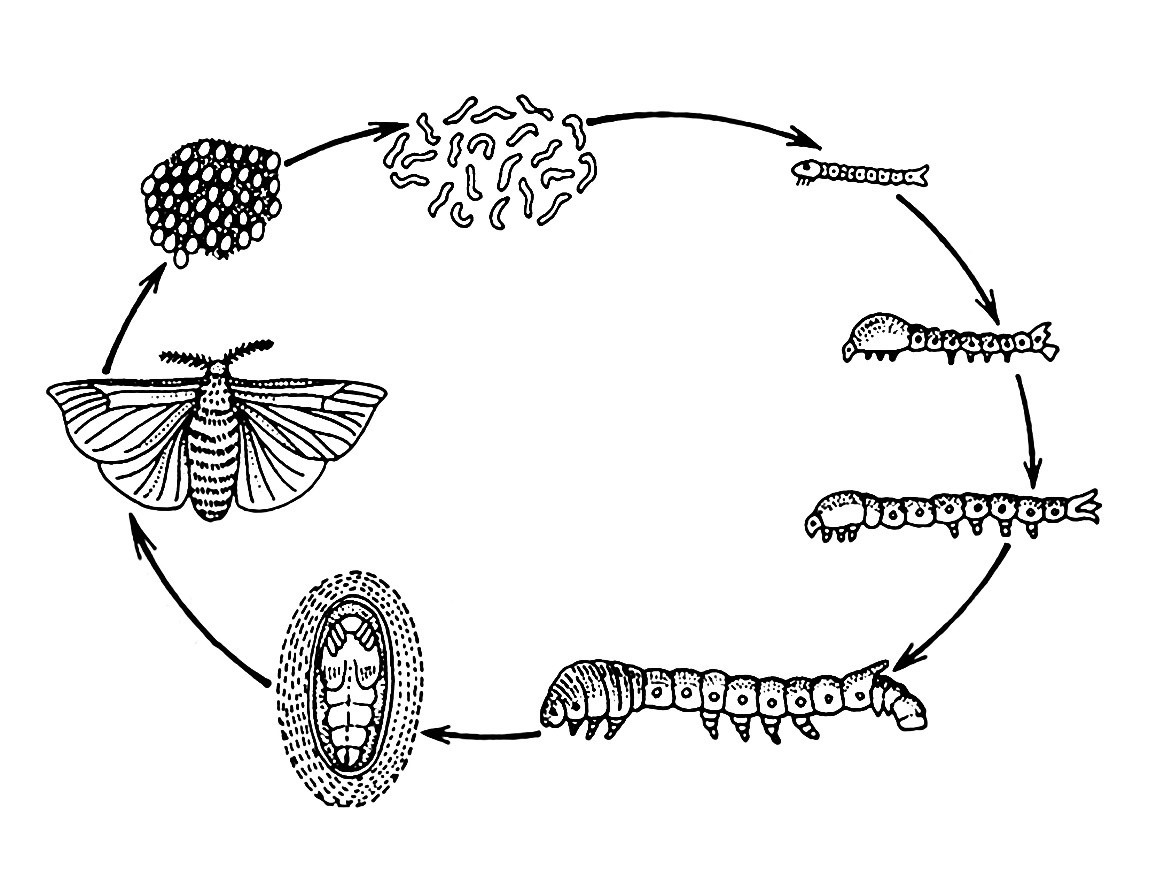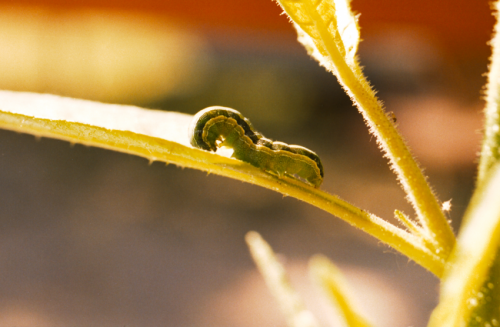This is a portrait of a cotton bollworm (Helicoverpa armigera) the protagonist of our story today. Like many other caterpillars, the cotton borer has to go through a life cycle to reach adulthood, going from eggs to larvae, then to pupae, and finally to butterflies.


The cotton borer is its larval stage. During this stage, its task is to focus on eating a lot of leaves, filling up its stomach to prepare to burrow into the ground, sleeping and waiting for itself to become a pupae. But sometimes, scientists observe a very strange phenomenon:
Some cotton borers refuse to eat or drink, when the day comes to go to the ground to pupate, it does not crawl down. Instead, the cotton borer climbed up to the top of the tree and writhed there like it was “goosebumps“.
This is a very risky behavior for cotton borers. While they don’t fall easily, “dancing” atop the treetops means that the bollworms are inviting themselves to the birds of the sky, who see them as a delicious meal.
So why are these cotton borers doing this?

Instead of climbing down to the base to pupate, this cotton borer climbs to the top of the tree and squirms.
Don’t think unfairly for them, it’s not that these worms were playing last night.”thingAccording to a new study published in the journal Molecular Ecology, scientists have finally solved the mystery.
And it’s horrible from a cotton borer’s perspective: They’ve been infected with a zombie virus. It was this virus that took control of the brain and caused the cotton borer to behave in such a way.
Zombie virus
It sounds like a horror movie, but this happens quite often in the insect world. Genk once wrote about a fungus that infects ants and turns them into zombie puppets. Wasp larvae turn spiders into “zombie slave” to protect them and then finish them off when you’re done using them.
And also deer that have been zombieized by some kind of prion. Prion is not a living organism, it is called a molecule “zombie” because but can silently turn the brain into sponges. Sometimes prions even infect humans… so be careful.
But let’s get back to our worms. Researchers from China Agricultural University subjected them to tests and found that the worms were infected with a strain of virus called nucleopolyhedrovirus (HearNPV):

Once infected, the HearNPV virus quickly took control of the cotton borers’ brains and drove them to the top of the tree. Scientists think this behavior has a history of millions of years in evolution.
The HearNPV viruses do this so that after the worm dies at high altitude, they can spread the virus with the wind and infect other hosts. Or when eaten by birds, the HearNPV virus can also transfer from cotton borers to birds.
At this point, the worms just do the same job as the virus transport bus to the airport to prepare for takeoff.
Virus hack cotton borer brain like?
Although HearNPV viruses have had a tradition of hacking cotton borer brains for millions of years, how that mechanism happened was not until recent research elucidated.
“Although many researchers have been interested in the mechanisms by which parasites and pathogens control host behavior, there has been little in-depth study to pinpoint their exact characteristics.“, said researchers at China Agricultural University.
“Here, we illustrate how HearNPV induces photoregulatory enhancement in H. armigera larvae, by stealing host visual perception and triggering climbing behaviour, causing the infected larvae to die. at high altitude”.

A dead cotton borer on top of a tree.
It turns out that light, not altitude or gravity changes, is what the HearNPV virus uses to control the cotton borer’s brain. Chinese researchers have done some experiments to confirm that.
In the first experiment, they installed a mesh system with LED lights and glass tubes and inserted infected cotton borers into it. The higher the LED is placed, the higher the pest will climb. In contrast, when the LEDs were set low, it turned out that the worms infected with the HearNPV virus crawled down.
The second experiment used cotton borers that had been blinded. As a result, when the host could not sense light, the HearNPV viruses could no longer control the cotton borer.
Chinese scientists have named this process phototaxis, or the way in which organisms aim for the Sun’s light source.
“Since sunlight hits plants from above, phototaxis is a reliable mechanism [mà virus có thể hack vào vật chủ của nó]to ensure that infected larvae climb and die at peak altitude”research writes.

Cotton borer is attracted to light after infection with HearNPV virus.
Not stopping there, Chinese researchers dig deeper by comparing the genetic differences between infected and uninfected cotton borers. They found six genes involved in light response were differentially expressed in individuals infected with the HearNPV virus. Finally, 3 genes involved in phototaxis were found.
The three genes are HaBL (the gene that detects short-wave light), HaLW (which detects long-wave light) and TRPL (the gene that converts light into electrical signals). When these genes are ablated in infected cotton borers, they are less likely to be attracted to the local light source and no longer climb to the top of the light source.
In short, the story of the virus-infected cotton borersgoosebumps” Light has shown us a strange host control mechanism of parasites. This is a sophisticated survival tactic that viruses have accumulated over millions of years of evolution.
And if a virus that infects caterpillars can do that, maybe there is another strain of virus that infects humans that can do the same, which scientists will one day discover.
Refer to Sciencealert, Science, Sciencenews
